Robust river workhorses…
GPS Marine brightly coloured tugs are among many tugs working for different companies along the river. Operating for over fifty years in harbours all over Europe, their tugs are a familiar sight on the waters of the Medway and the Thames.
And from the banks of the Thames in central London you are bound to see them towing, or pushing loads to and from the many riverside construction sites, particularly the massive Tideway tunnel sites for the new London sewer.
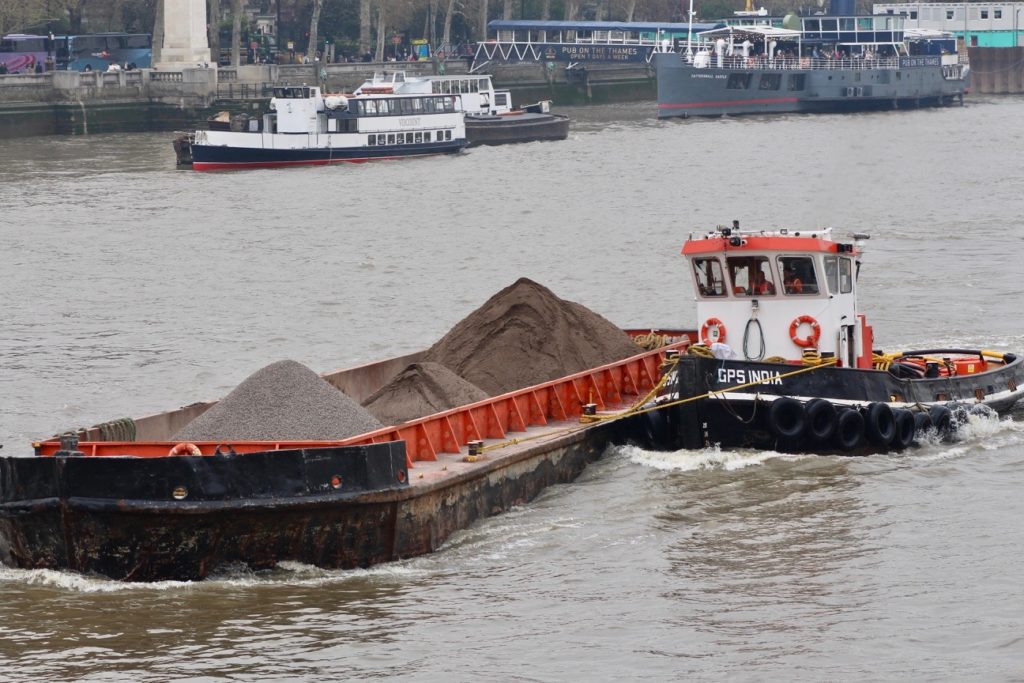
Using the tides to their best advantage, every day they save London’s roads from large-scale pollution and congestion by carrying upstream machines, precast products for construction, and around 2,000 tonnes of aggregate, used for mixing with bitumen, cement, gypsum, lime and other material to form concrete or mortar, used for building projects throughout London.
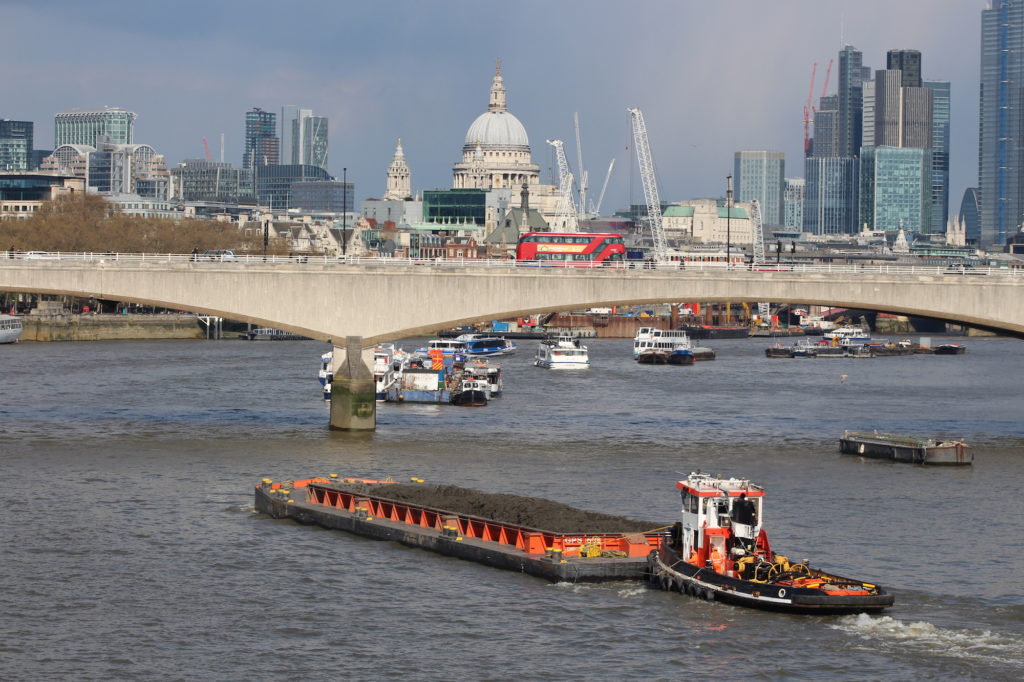
“On a typical day,” they tell me, “we transport four barges, each carrying 1,600 tonnes of material, so relieving London’s roads of 352 lorry journeys.”
Coming downstream, again saving London from road congestion and pollution, as this link to a Tideway film explains, you will often spot tugs pushing massive barges filled with spoil from the various sites along the river to ‘spoil reception facilities’ at East Tilbury, where it can be graded for ‘beneficial reuse’.
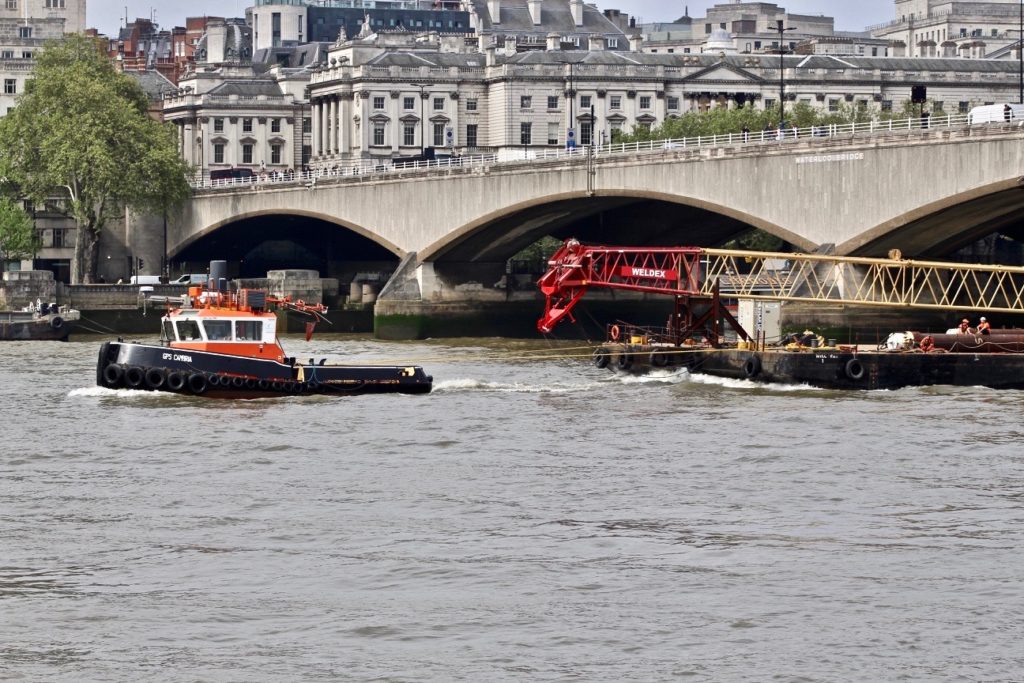
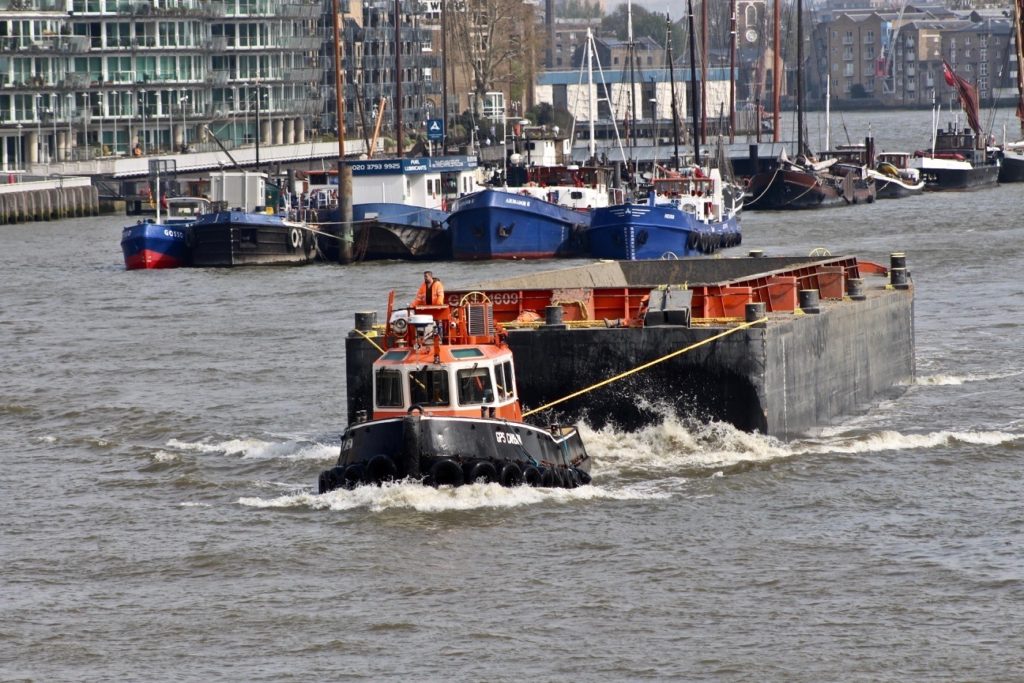
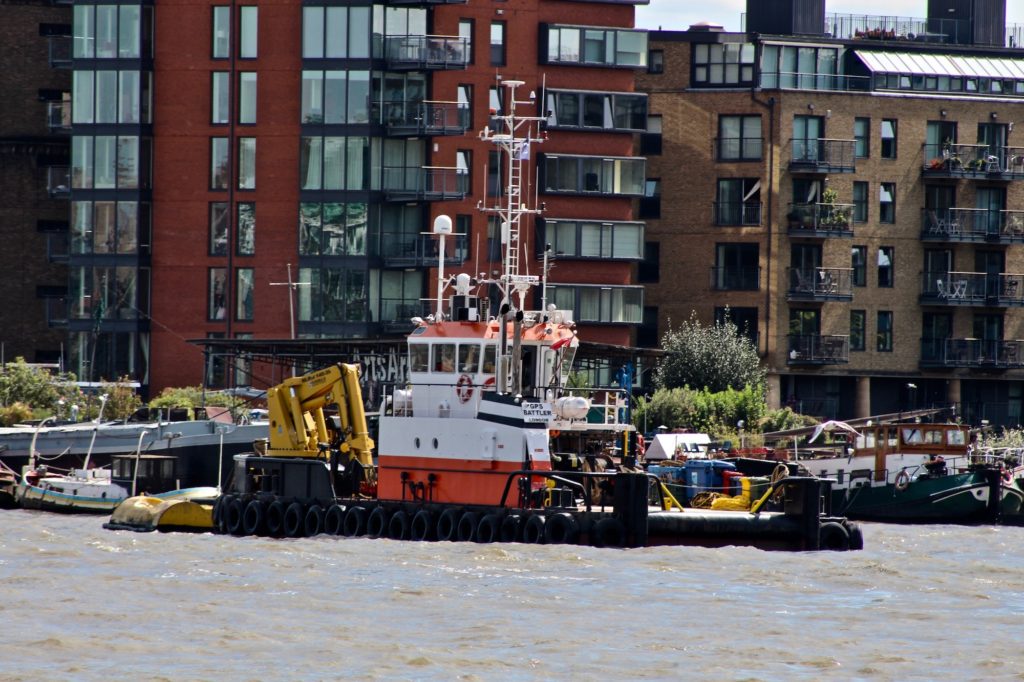
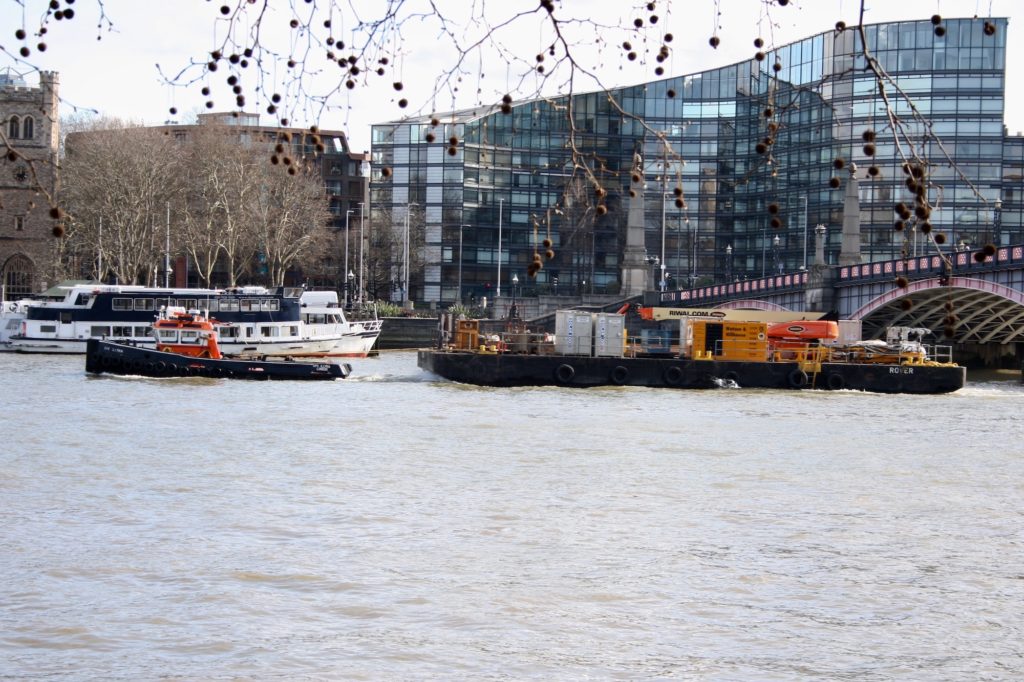
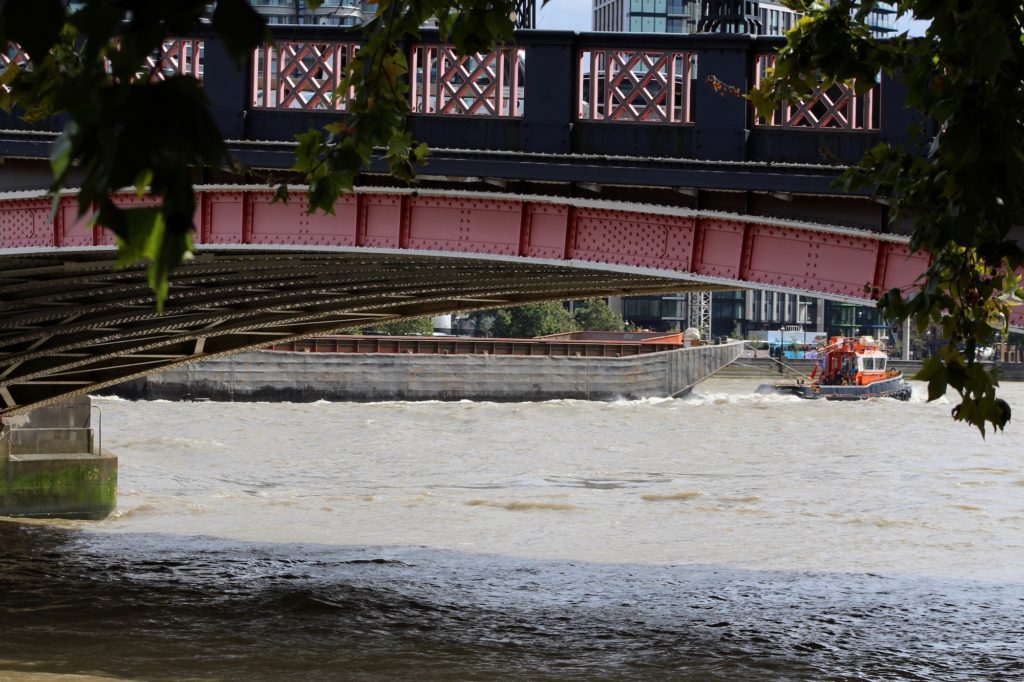
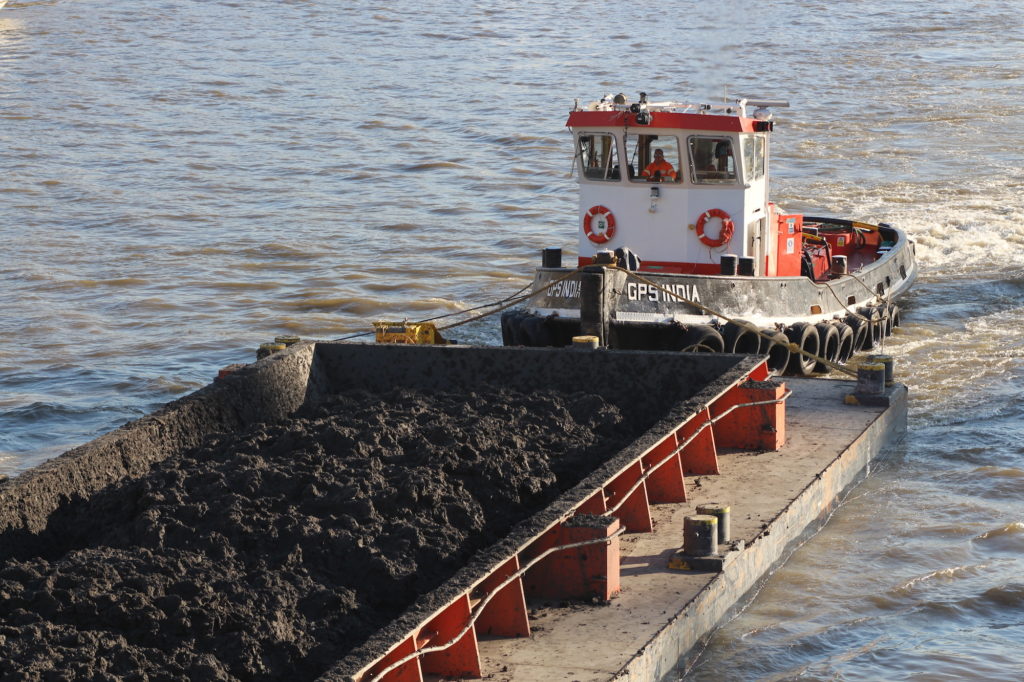
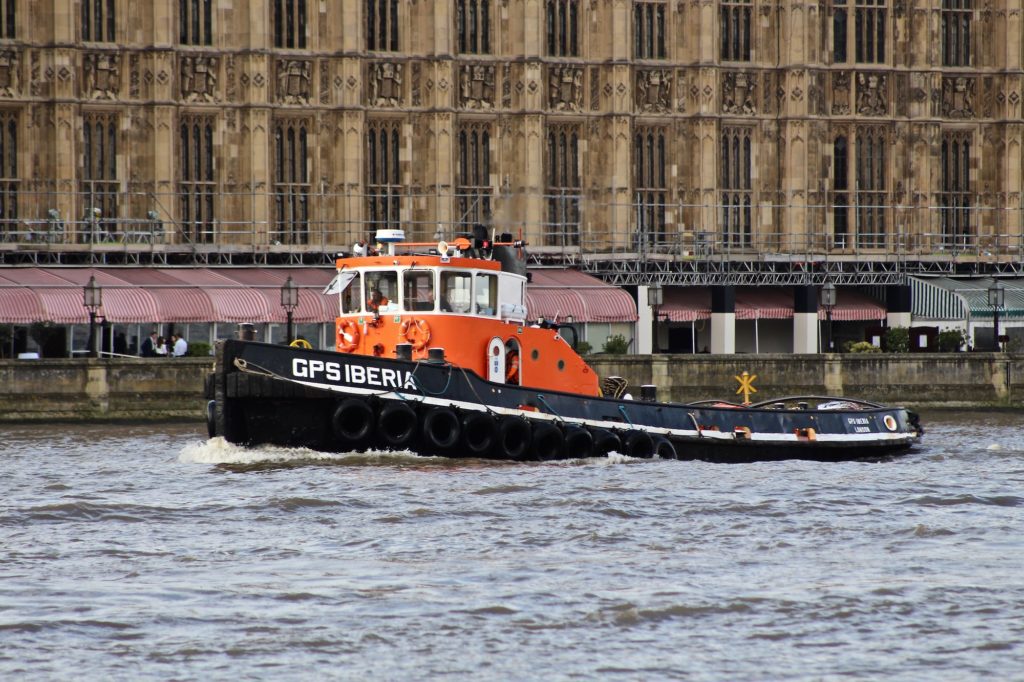
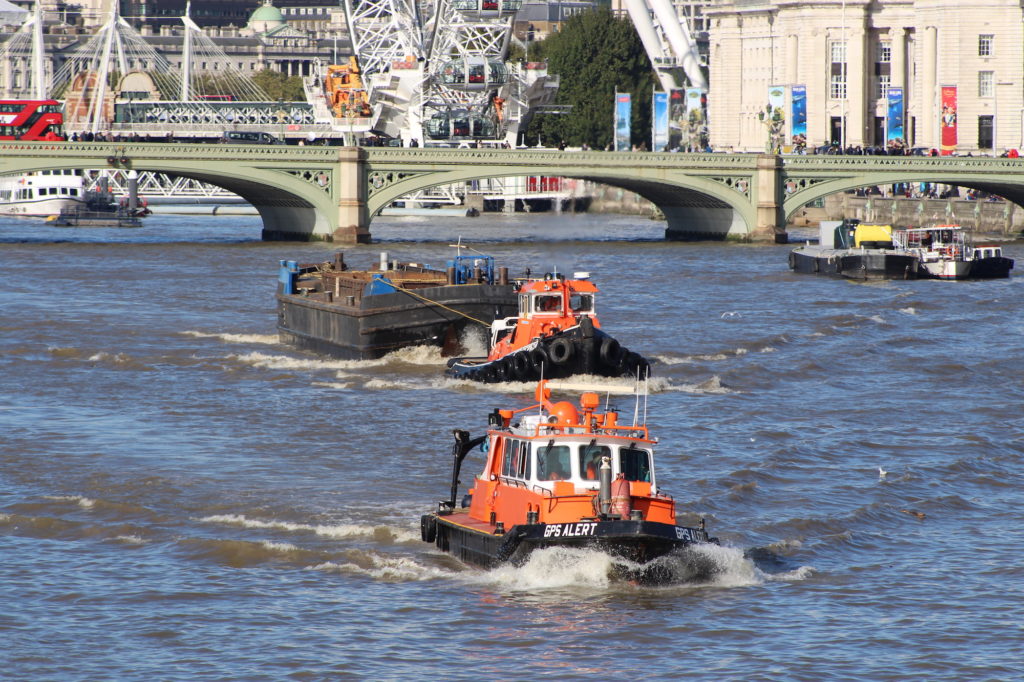
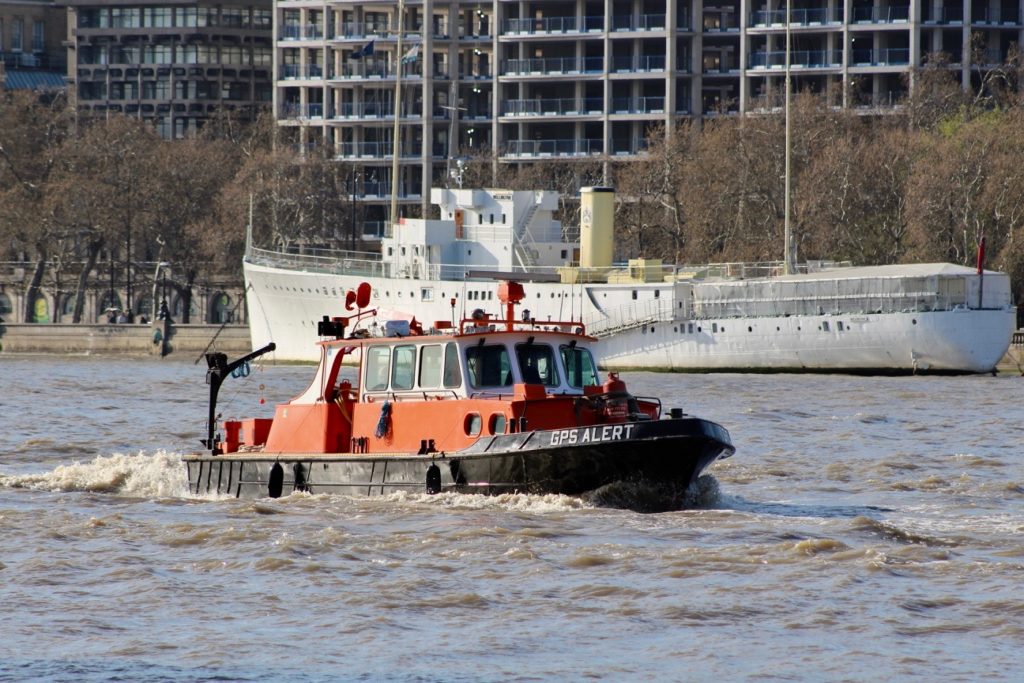
In 2018, GPS Marine added sleek-looking vessel ALERT to their fleet as a “fleet support launch”, fully equipped with a floating office to carry technical officers to support and assist tug crews on the river. She also has equipment to undertake repairs, maintenance, salvage, and first aid. With a maximum speed of 20 knots, she can, if necessary, move swiftly to where she is needed.
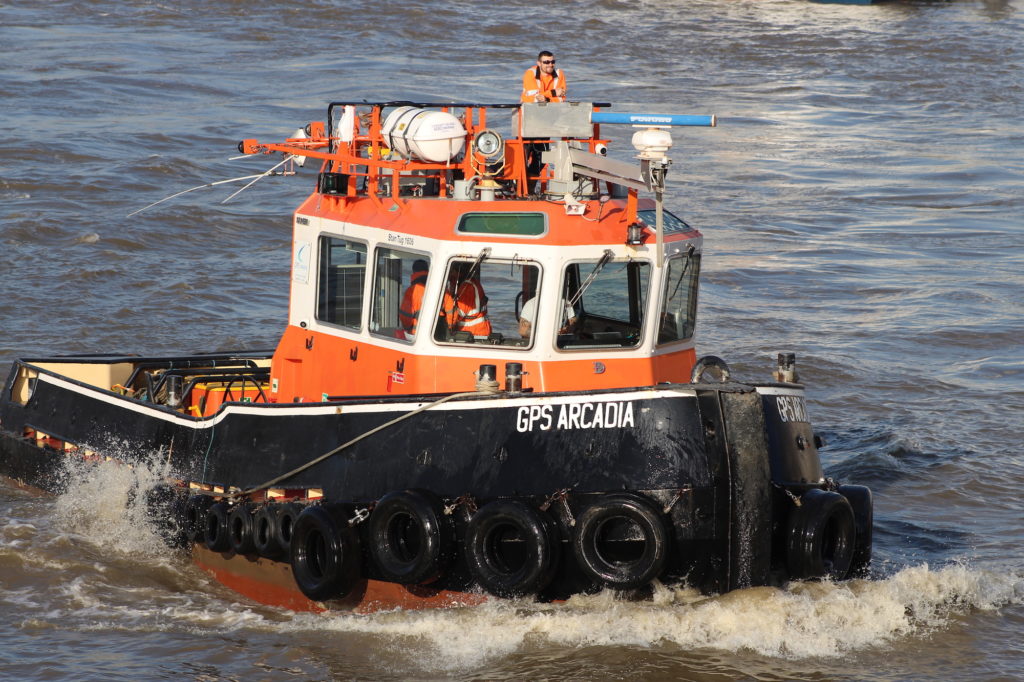
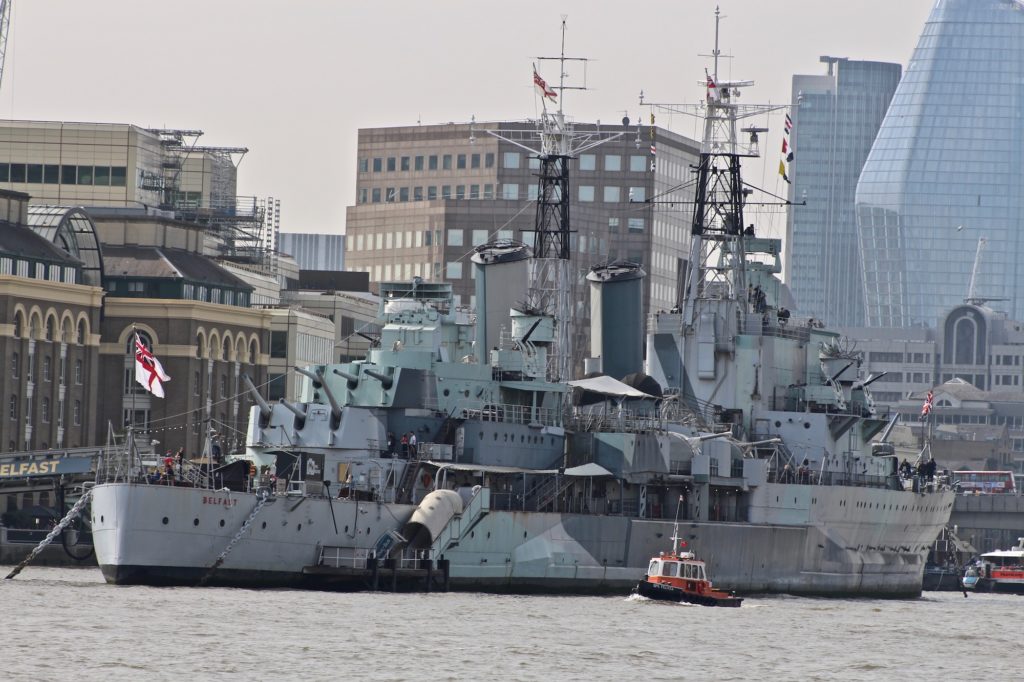
I’m just one of many who enjoys seeing tugs passing along the Thames. Professionals and amateurs alike can be attracted by their technical make-up, the varied work they do, and their sheer physical appeal. They brighten up the views and provide interest as you walk along the riverside. However, aesthetically appealing as they are, it would be wrong to over romanticise them. Even with modern improvements, working on tugs can be uncomfortable, dirty, difficult, and dangerous. You can find out how life for tug crews on the Thames used to be, and how it has changed in recent years, by looking at this short film on Thames doyen Peter Duggan interviewed by Nikolai Bendix in 2015. And it is still changing…
To find out more see:
Posts by GPS Marine on some of their work on the Thames.
The Liquid Highway “A leading River Thames source for news and info with the world’s largest Thames vessel photo gallery”, run by Thames Waterman and Lighterman, Ben, and follow him on Twitter @liquid_highway1
And another interesting resource to explore is: Thames Tugs